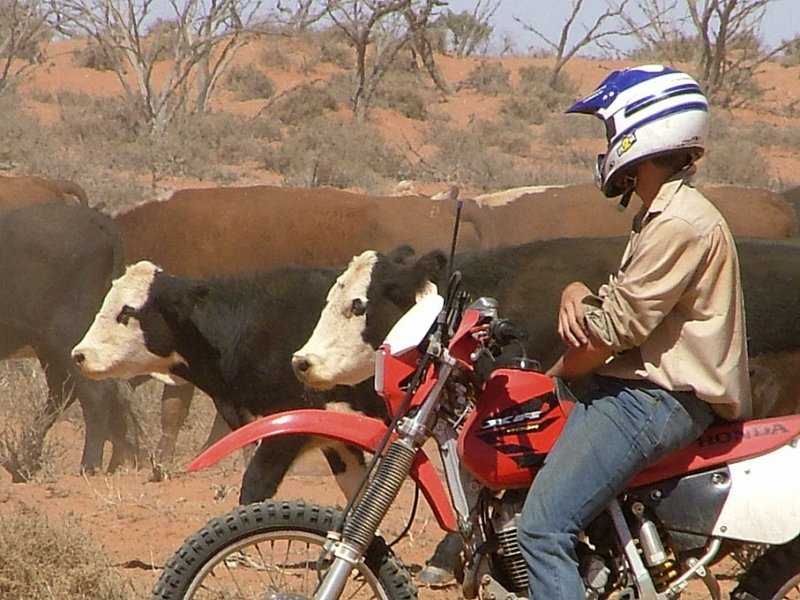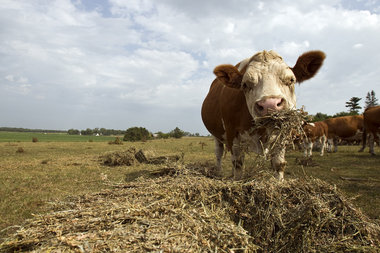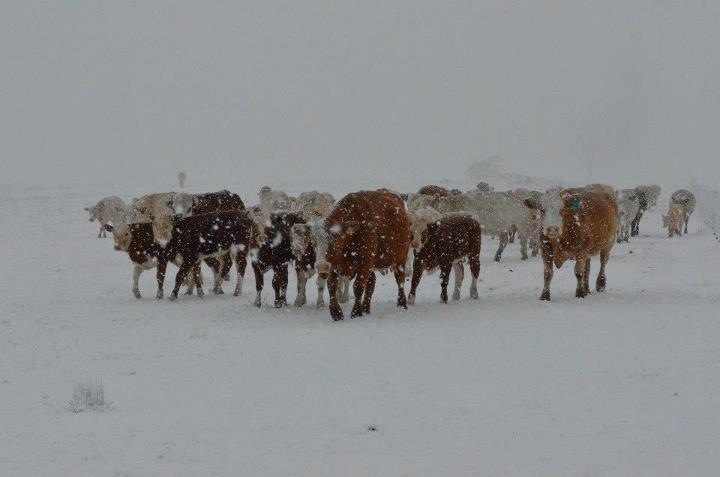Over the past few weeks I’ve been visiting a lot of clients. We’ve been looking at new pastures, and discussing how to manage livestock on lush green pasture. As well as discussing the importance of vaccinations for clostridial disease, there are other things to consider.
One of the topics we have had to consider is the role of fibre in the diet. Fibre is something we often don’t think too much about. I reckon we overlook fibre, as in most cases we probably take it for granted! After all, plants contain fibre in their physical make up, so I suppose we assume livestock are getting sufficient quantities in their daily diet.
You might ask, why is fibre important anyway?
Fibre plays a very important role in keeping a rumen healthy and functioning. And in livestock production, a healthy functioning rumen is directly related to production and performance.
The intake of fibre fulfills a few roles in the diet. The first is to encourage the development of saliva. Saliva is developed through the chewing and rumination of feed. Saliva does more than just making your cows slobber!
More importantly saliva helps keep the rumen from becoming too acidic. Rumen microbes prefer a pH level of around 6.2 – 6.6 for most effective activity. Saliva has a pH of around 8.0, so its slightly alkaline, and it also contains some naturally occurring buffers.
In healthy cattle, rumen pH does fluctuate quite a lot in a 24-hour period. It’s not unusual for pH to drop as low as 5.5 for a few hours before recovering. This drop can be caused particularly be eating lush feeds, silages or grains that are all low in fibre. The high digestibility and low fibre content of feeds may mean that a cow doesn’t need to chew and ruminate as much. This reduces the saliva production and allows the rumen pH to drop.
As the rumen pH drops, bacteria such as Step Bovis rapidly increase. This bacteria is an acid producing bacteria and this also adds to the acidification of the rumen. If the rumen can’t buffer the impact of the acid build up, the rumen will shut down. If the pH level is below 5.2 you will notice the animal. It will appear physically ill, have scours and if not treated could die.
In grazing situations, particularly on lush pasture, animals can suffer from acidosis without being easily recognised. This occurs when pH fluctuates between 5.2 and 5.6. Your cattle many not appear sick, but they will eat and produce less.
So what does this mean in practical terms? For livestock managers your target should be for your animals to have around 30% of their daily intake of dry matter as fibre. In most pasture situations, this will occur without you needing to do much at all.
However in seasons where you have young, lush pastures that are low in fibre, you should consider adding some fibre to the diet. You can do this by providing access to hay in feeders, or by allowing cattle access to more mature grass pastures. This will allow stock to consume adequate fibre to manage their diet. Cattle that have access to the right amount of fibre will produce more than 180 litres of saliva a day, which really helps manage the acid levels in the rumen.
The other role fibre plays in the rumen is called the roughage effect. It’s basically the natural reaction of the rumen walls to the scratching of the material the animal has eaten. As the feed presses on the walls, it seems to trigger the rumen to contract and expand, which basically helps the rumen churn the feed around, and allow the bacteria a better chance to break the feed down and release the energy and protein within the feed to be absorbed by the digestive system.
I reckon the rumen is an amazing organ. However, knowing a little bit more about its needs will help you manage your pastures and your livestock more efficiently and effectively. So if you are looking out over some lush green feed, think about the need to include some fibre. If you’re not sure about how much fibre there is in the feed, why don’t you take a feed sample and send it off?
A feed test will tell you the Neutral Detergent Fibre (NDF) of your sample. NDF is the measurement of the amounts of hemicellulose, cellulose, lignin and ash in plant material. Basically it is the digestible and indigestible fibre in a feed. As a guide you would want to make sure the NDF value is higher than 25% and for dairy cattle it should be up to 40%. If it is less than this in your feed sample I would think you should be actively supplying hay or allowing access to another form of fibre.
It won’t take long to bring your rumen back on line, particularly if your cows can ruminate and produce enough saliva each day. So when you manage fibre you will find a happy rumen and more importantly productive livestock.






































